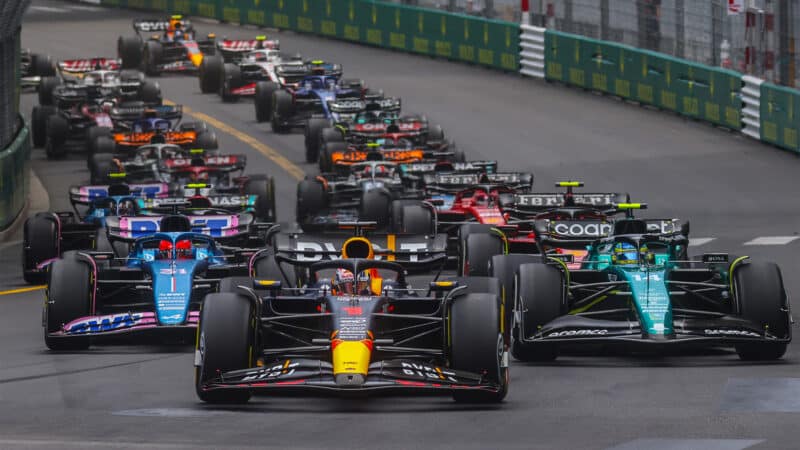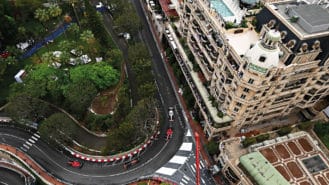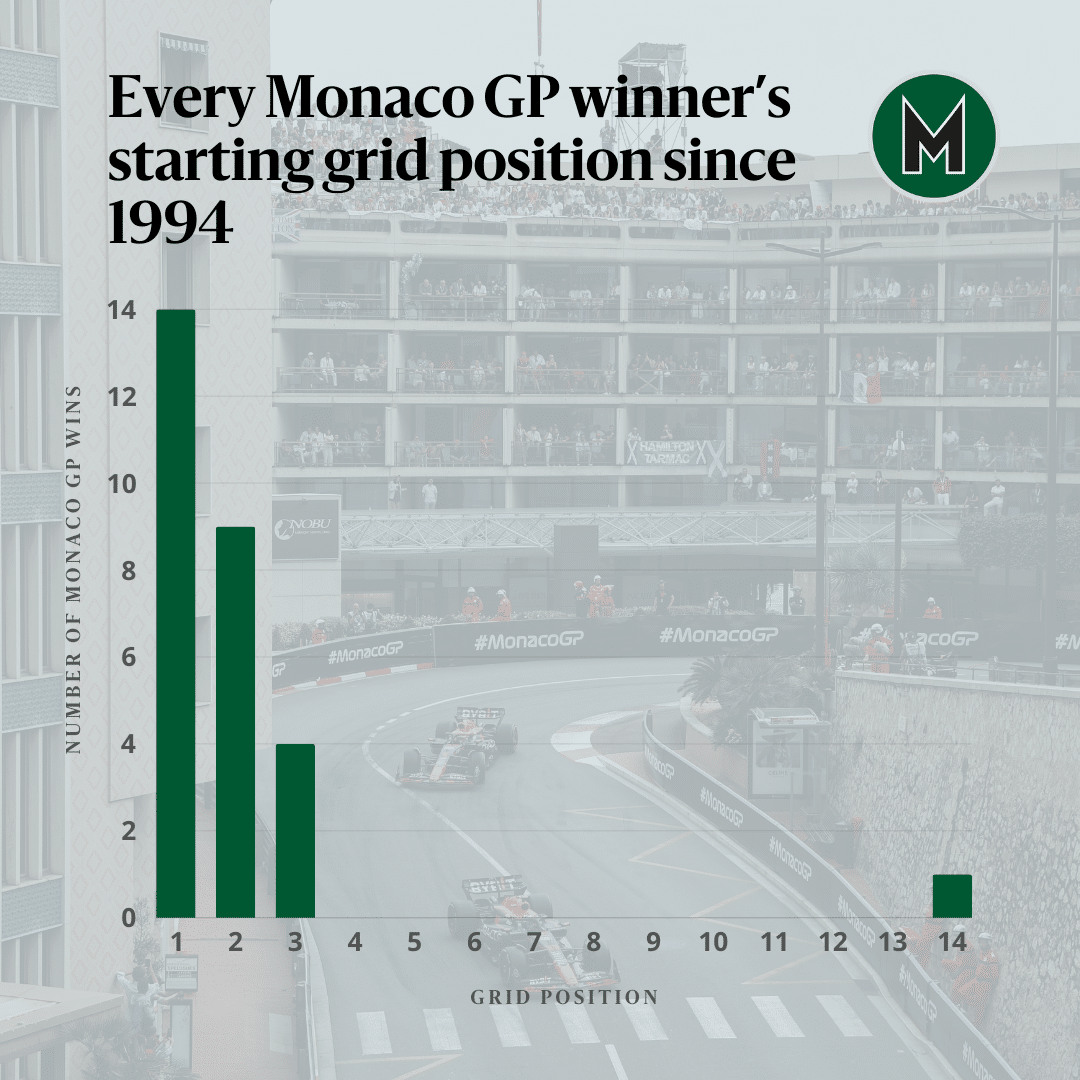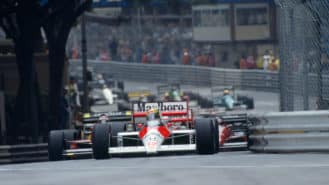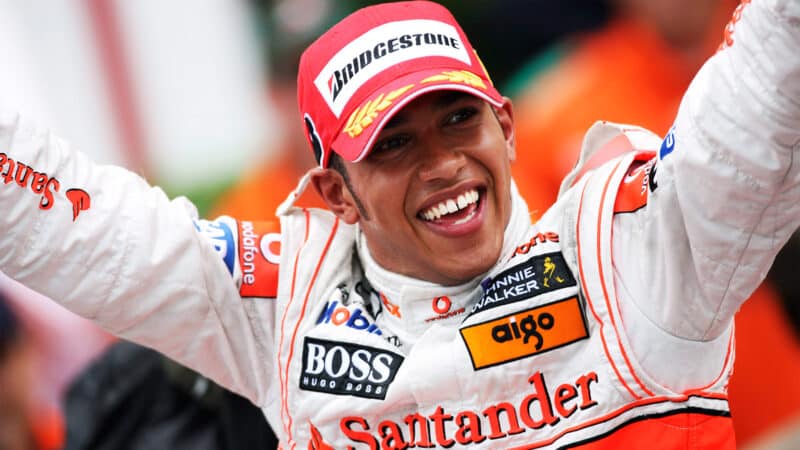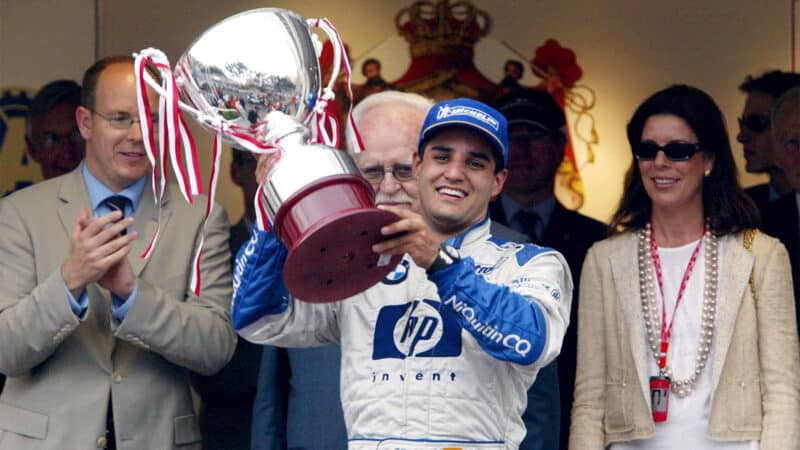If successful, their driver will have gained time on rivals and come out ahead when they make their stop and rejoin the circuit.
The strategy has become more powerful as the Monaco GP has turned from a two-stop race to a one-stop race — leaving little chance for leading drivers to respond should they be overtaken via an overcut. Staying out longer also gives drivers a greater chance of pitting under a safety car, costing them less time. The tactic has worked for those leading the race too, enabling them to maintain their track position and prevent anyone else from overcutting them.
This does mean that the first part of the race can simply be a waiting game until the first teams relent and call their cars into the pits. Pitting earlier for fresh rubber (undercutting) is typically less beneficial in Monaco because low tyre wear means that their’s less of a performance differential between cars on old and new tyres.
Nevertheless, even a successful overcut is still no guarantee of victory, as luck very much plays its part in Monte Carlo. In our rundown of winners who didn’t start on pole below, several were helped on their way by rivals’ pitstop blunders and well-timed safety cars.
And as our chart below shows, if you don’t start in the top three then your chances of winning are minimal — unless your name is Olivier Panis, whose charge from 14th to first in 1996 remains a legendary Monaco tale.
2022 — Sergio Perez
Starting grid position: 3rd
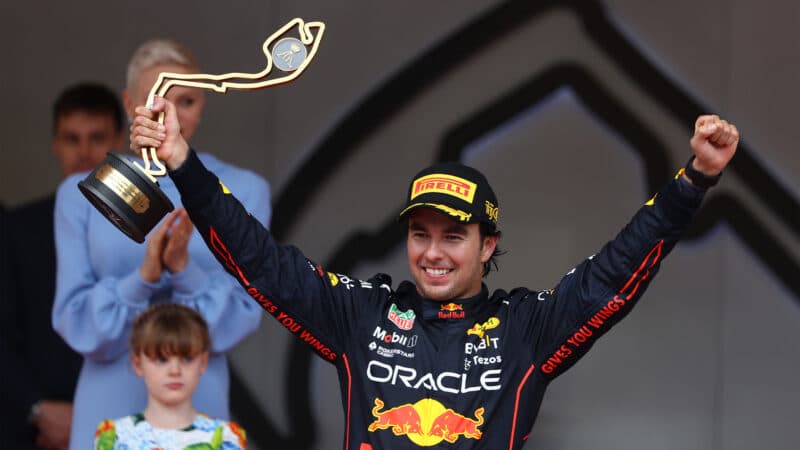
Sergio Perez wins the 2022 Monaco GP
Red Bull
The 2022 Monaco Grand Prix is remembered as the site of a Red Bull strategy masterclass, as Sergio Perez overcame a Ferrari front row lockout in qualifying to score his first ever victory in the Principality.
After a delayed start due to bad weather, the entire grid started on the full wet weather tyre. Perez lined up third, in front of team-mate Max Verstappen but behind the Scuderia pairing of Carlos Sainz in second and hometown hero Charles Leclerc on pole.
17 laps of running was enough to remove the majority of the standing water on-track, and Perez was amongst the first to switch to the intermediate tyre. Leclerc followed a lap later while Sainz stayed out. But on a quickly drying Monte Carlo circuit, Ferrari made a mistake when it chose to pit both Sainz and the leading Leclerc at the same time for slick tyres on lap 22 — costing both cars precious time.
Perez and Verstappen stayed out, ran in relatively free air and then pitted a lap later for the hard tyre — a decision which ultimately allowed Perez to leapfrog into the lead via an overcut, followed by Sainz, Verstappen and then Leclerc.
The race was red flagged a handful of laps later as Mick Schumacher crashed heavily at the swimming pool chicane. In order to retain track position, Red Bull switched both Perez and Verstappen onto the faster medium tyre for the restart, while both Ferraris stuck with the longer-lasting yet slower hard compound — a decision which ultimately secured a brilliant 1-3 Perez-led victory for the Milton Keynes outfit.
It was the second time in two years that a Red Bull driver had won from a non-pole position too, as Verstappen technically accomplished the feat in 2021 after Leclerc’s pole-sitting Ferrari broke down on the way to the grid. Although the Dutchman started in the second-place slot, he was still the furthest car forward on the grid.
2017 — Sebastian Vettel
Starting grid position: 2nd
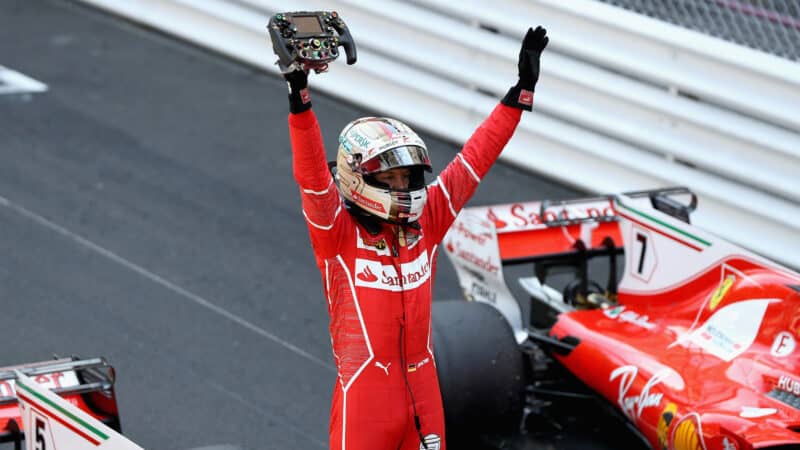
Vettel wins in Monaco over team-mate Raikkonen
Getty Images
After missing out on a Monaco GP pole by just 0.043sec to Ferrari team-mate Kimi Raikkonen, Sebastian Vettel ensured he’d have the last laugh come race day.
The German put up a stout defence of second-place against the Mercedes of Valtteri Bottas in the run up to Turn 1 after lights out, and was soon pestering Raikkonen for the lead. But as a familiar story began to play out, with the Finn not willing to let Vettel past, the four-time world champion adopted a race winning strategy which was built on nothing else but pure pace.
When Raikkonen chose to pit on lap 34 for a set of super soft tyres, Vettel stayed out, setting one blistering lap time after the next before making his pitstop on lap 37.
He emerged from the pitlane just as Raikkonen crossed the start/finish line but was able to sneak ahead of the Finn before the run up toward Casino Square. From there Vettel cruised to the chequered flag with enough pace to keep a comfortable lead over both his team-mate and the surging Red Bull of Daniel Ricciardo behind him.
2016 — Lewis Hamilton
Starting grid position: 3rd
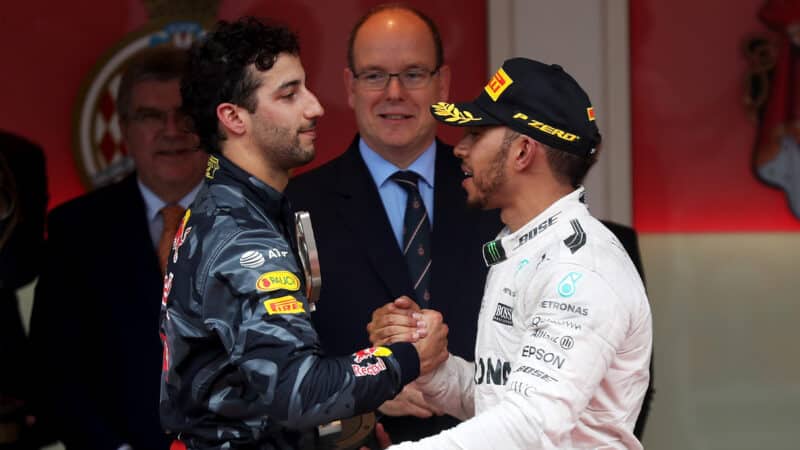
Hamilton succeeds off the back of Red Bull error
Getty Images
Lewis Hamilton‘s fortunes at the 2016 Monaco Grand Prix were based primarily on a Red Bull blunder, but an overcut strategy still played an important role in his ultimate victory.
Heavy rain forced the field — headed by Daniel Ricciardo, Nico Rosberg and Hamilton — to start behind the safety car but a quickly drying circuit saw of strategies to unfold.
Red Bull pitted the leading Ricciardo early, switching him to the intermediate tyre while Mercedes chose to leave Hamilton out on his full wets — hoping that a re-emergence of the safety car would hand him a free stop. The Brackley outfit’s prayer went unanswered, and Ricciardo closed back up to the Mercedes. But by pitting later than the Red Bull behind him, Hamilton has able to switch straight to the dry weather tyres on lap 31. Ricciardo attempted to follow suit a lap later, but as he entered the pitlane he was met with a surprised pit crew and no tyres in sight.
The blunder meant Ricciardo was sat stationary for 13 seconds — more than enough time for Hamilton to pass the Aussie just as he was rejoining the circuit at Sainte Devote.
On fresher tyres, Ricciardo possessed the pace to pass Hamilton in the closing stages, but couldn’t find a way past. Hamilton was crowned a Monaco GP winner for the second time.
2015 — Nico Rosberg
Starting grid position: 2nd
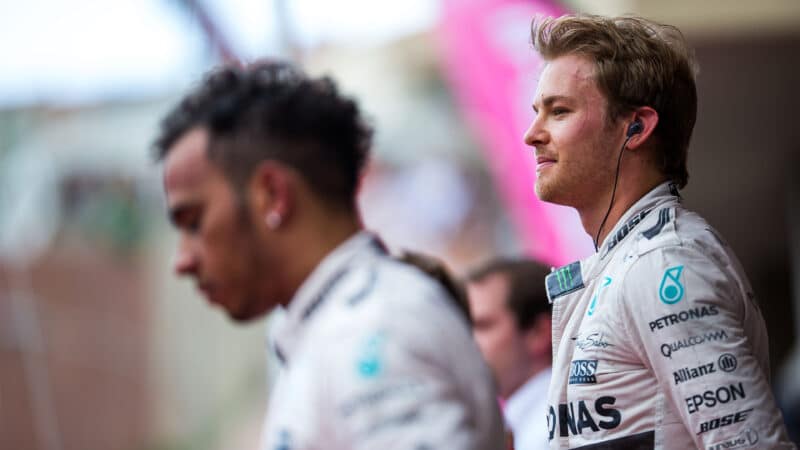
Rosberg prospered from a questionable Mercedes strategy decision
Getty Images
Nico Rosberg was set to finish second-best to Mercedes team-mate Lewis Hamilton at the 2015 Monaco GP, until a confusing and controversial decision promoted him to the top step of the podium.
The German had started second behind his pole-sitting team-mate and narrowly held onto his position after a tussle with Ferrari’s Sebastian Vettel at the start.
